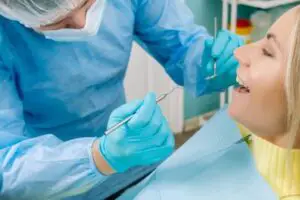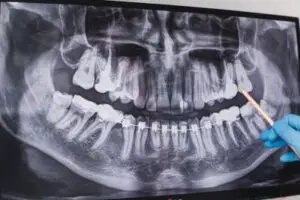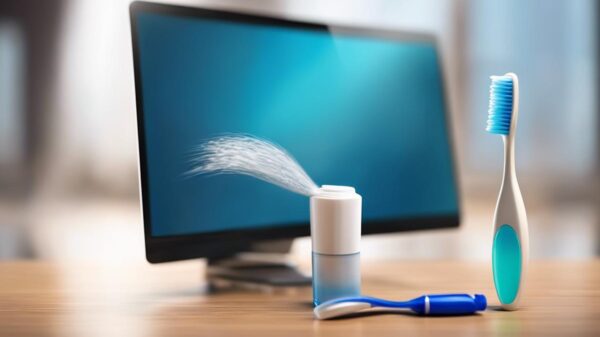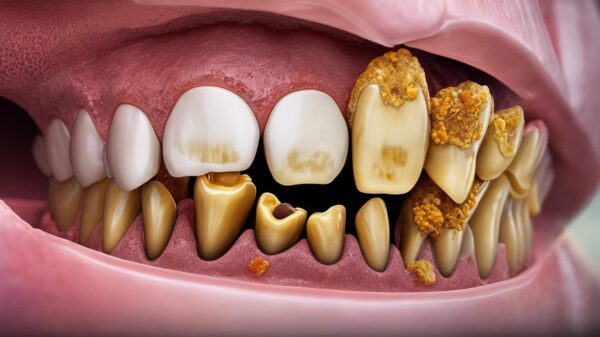If you have ever had a filling, then you may understand the reservations behind this question. It’s tough to go to the dentist anyway, but to have to go again based on a filling being needed just adds to the complexity of seeing the dentist.
No matter who you are, the dentist is not the doctor that is on the top of your list to see. You do not have to have your filling replaced but there is more detailed upkeep for those areas. That is usually because even if you don’t have cavities or something major wrong with your teeth. Your dentist can still find something that needs to be worked on. They can range anywhere from needing to brush or floss more because of gingivitis to the need for braces or other work.
 If a filling falls out, do I need to get it replaced?
If a filling falls out, do I need to get it replaced?
If you’ve ever had a dental filling, you may have wondered if you’re doing something wrong. After all, fillings are often seen as a necessary evil – something that we have to do to keep our teeth healthy. But are we doing something wrong if we need a filling?
The answer is no. Fillings are simply a way to treat cavities – and cavities are very common. In fact, according to the American Dental Association, about 91% of adults aged 20-64 have had at least one cavity in their lifetime. So if you’ve ever needed a filling, know that you’re not alone.
Cavities occur when bacteria in your mouth produce acids that eat away at your tooth enamel. This can happen because of poor oral hygiene, sugary or acidic foods, drinks, dry mouth, and more. And once a cavity forms, it will only get worse over time – which is why it’s important to treat them as soon as possible.
Fillings are one way to do that. They essentially fill the hole that has been created by the cavity, preventing further damage. There are different types of fillings available, but they all serve the same purpose.
We shouldn’t be afraid of getting a dental filling because it can help to restore our teeth and protect them from further damage.
What are other reasons for getting a dental filling?
Another common reason for getting fillings is to repair cracked or chipped teeth. This can happen due to an injury, clenching or grinding your teeth, or simply from using your teeth to bite on hard objects (like ice). Fillings can help to restore the strength and function of the damaged tooth. Fillings are also sometimes used for cosmetic purposes. If you have a tooth that is misshapen or discolored, a filling can be used to improve its appearance. Fillings can also help to prevent tooth decay and improve our oral health.
There are two main types of dental fillings: amalgam and composite. Amalgam fillings are made of silver, mercury, and other metals. They are strong and durable, but they can be noticeable because of their silver color. Composite fillings are made of plastic and glass particles, and they can be matched to the color of your teeth. They are not as strong as amalgam fillings, but they are less noticeable.
Are they painful to get?
Dental fillings are not generally considered to be painful to get. Most people report feeling little to no pain at all during the procedure. There are a few reasons for this. First, the area around the tooth is numbed with an anesthetic before the filling is placed. This ensures that you won’t feel any pain during the procedure. Secondly, dental fillings are typically placed quickly and efficiently, so there is little time for discomfort to set in. Finally, many people find that the sensation of having a filling placed is quite mild and easily tolerable.
Of course, everyone experiences pain differently, so some people may experience more discomfort than others when getting a dental filling. If you are worried about pain, be sure to discuss your concerns with your dentist beforehand. They will be able to help you determine if dental fillings are right for you, and if so, take steps to ensure that the procedure is as comfortable as possible.
So what should you expect after getting a filling done?
Most people who have had a cavity filled report that they feel back to normal within a few days. It is important to keep up with your oral hygiene routine, even after your filling, to prevent further cavities. Here are a few things you can expect after getting a dental filling:
1. Sensitivity – You may experience increased sensitivity to hot and cold temperatures in the area of your filling. This is normal and should go away within a week or two. If it persists, please schedule an appointment with your dentist.
2. Gum soreness – Your gums may be sore for a day or two after the procedure. This can be alleviated by rinsing with salt water or using over-the-counter pain medication.
3. Improved appearance – Your smile will look better after the filling is in place, and the cavity will no longer be visible.
4. Improved oral health – Fillings help to prevent further decay and cavities, so you can expect your overall oral health to improve after the procedure.
5. peace of mind – knowing that you have taken care of a cavity and improved your oral health can give you peace of mind.
 What would make a dental filling fall out of your teeth?
What would make a dental filling fall out of your teeth?
There are a few reasons why a dental filling may fall out of your teeth. One reason is that the filling was not placed correctly in the first place. Another reason is that the tooth decay underneath the filling has gotten worse, causing the filling to become loose. Additionally, if you do not take care of your teeth and regularly brush and floss, the bacteria in your mouth can cause the filling to loosen and eventually fall out. Finally, if you eat hard or sticky foods, they can put pressure on your teeth and cause the filling to come out. If you think your filling may be loose, it is important to see your dentist as soon as possible so that they can determine whether or not you need a new filling.
If you have a filling, it’s important to know when it needs to be replaced.
Here are some signs that it might be time for a new filling:
– Your filling is cracked or broken
– There is tooth decay around the filling
– The filling has come loose
– You have pain or sensitivity in the tooth with the filling
If your dental filling falls out, you’ll need to get it replaced as soon as possible. Dental fillings are used to fill in cavities and prevent further tooth decay. When a filling falls out, the cavity is exposed and can become bigger, leading to more tooth decay. If you have a dental filling that’s loose or falling out, contact your dentist right away to schedule an appointment. Your dentist will examine the cavity and determine if you need a new filling. In some cases, the cavity may be too big for a new filling and you may need a crown or other type of dental restoration.
The best thing to do is make sure you are taking proper care of your dental filling.
If you have a dental filling, it’s important to take care of it properly. Here are a few tips on how to do that:
1. Brush your teeth regularly. This will help remove any plaque or bacteria that could cause problems with your filling.
2. Floss your teeth regularly. This will help remove any food particles or other debris that could get trapped under your filling and cause decay.
3. See your dentist regularly for checkups and cleanings. This will help ensure that your filling is in good condition and catch any problems early.
4. Avoid chewing hard foods or ice. This can damage your filling or even cause it to come loose. If you do chew something hard, be sure to brush and floss afterward to remove any particles that could cause decay.
5. Avoid using your teeth as tools. This can also damage your filling or cause it to come loose. If you need to open something, use a knife or other tool instead of your teeth.
Taking care of your dental filling is important for maintaining good oral health. By following these tips, you can help ensure that your filling lasts for many years to come.
 Hopefully, this helps.
Hopefully, this helps.
If you do need to get a filling redone, the good news is that it’s usually a pretty quick and easy procedure. Your dentist will simply remove the old filling and replace it with a new one. In most cases, you’ll be able to go about your day as normal afterward. And while it can be costly upfront, it will be even more costly if left unattended.
Do what’s best for your teeth because ultimately, the better you treat your smile, the more you can let it shine for others to see.
– the article is sponsored by DA OF Childersburg












